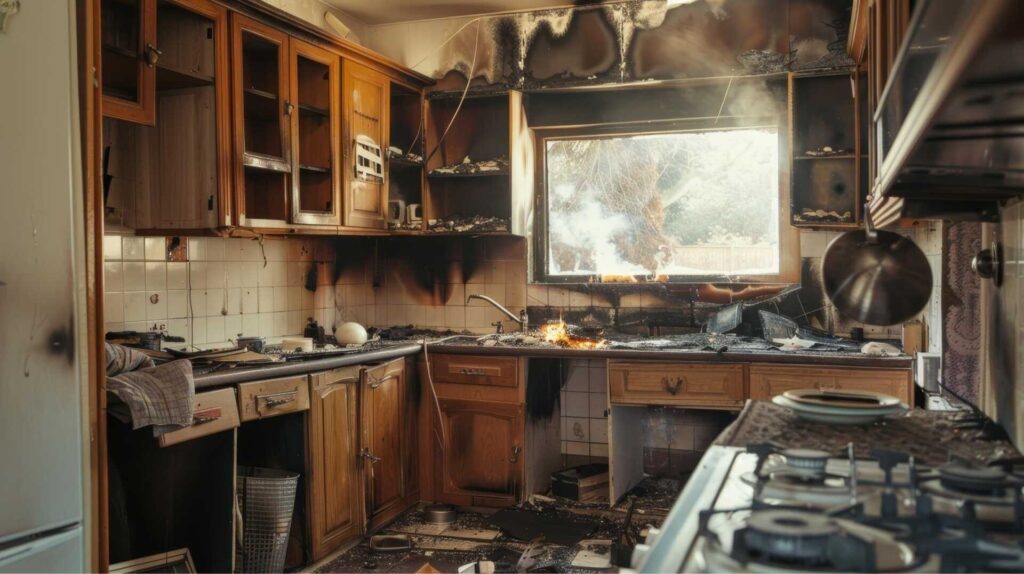
Contents
When facing the aftermath of a fire, the importance of selecting top-tier fire damage restoration services cannot be overstated. From the intricacies of structural repair to the nuances of odor removal, these professionals undertake a meticulous process aimed at restoring your property to its pre-fire condition. The expertise, equipment, and methods employed by these elite services go beyond the surface, ensuring a thorough restoration that addresses both visible and hidden damage. Understanding the intricacies of such services can make a significant difference in the outcome of your property’s restoration journey.
Key Takeaways
- Thorough damage evaluation ensures a comprehensive restoration plan.
- Specialized equipment like dehumidifiers and pumps are used for water extraction.
- Proper cleaning techniques and equipment are essential for smoke and soot cleanup.
- Structural repairs focus on strengthening the building and ensuring safety.
- Advanced odor removal techniques target and eliminate persistent smoke odors.
Initial Assessment and Inspection
Upon arriving at the fire-damaged property, our team immediately begins the evaluation and examination process. The first step involves a thorough damage evaluation to understand the extent of the fire’s impact on the property. This evaluation is significant in developing a detailed restoration plan tailored to address all the damages effectively.
During the initial evaluation, safety precautions are of utmost importance. Our team confirms that all hazards are identified and controlled to create a secure working environment. This includes evaluating structural stability, electrical risks, and potential contamination from soot and smoke residue. By prioritizing safety, we can proceed with the restoration process efficiently and securely.
Environmental hazards are also a key focus during the inspection phase. The aftermath of a fire can introduce various pollutants and toxins into the property, posing health risks to both occupants and restoration professionals. Our team conducts thorough environmental danger evaluations to mitigate any potential dangers and ensure a safe restoration process for everyone involved.
Water Extraction and Drying
Beginning the process of water extraction and drying is a pivotal step in mitigating further damage and restoring the property after a fire incident. Water left behind from firefighting efforts or burst pipes can lead to mold growth and structural issues if promptly addressed. Mold prevention plays a significant role during this phase to safeguard the safety and health of the property’s occupants.
Professional restoration teams utilize specialized equipment such as pumps, vacuums, and dehumidifiers to extract water efficiently. Once the excess water is removed, the drying process commences. This involves strategically placing air movers and dehumidifiers to dry out affected areas thoroughly. Monitoring moisture levels is crucial to prevent mold from taking hold in damp spaces.
In cases where flooring has been severely damaged by water, replacement may be necessary. Water can seep into carpets, wood, and other flooring materials, causing warping, discoloration, and weakening of the structure. Prompt removal and replacement of damaged flooring not only enhances the aesthetics of the property but also prevents potential hazards and further deterioration.
Addressing water extraction and drying promptly and effectively is indispensable in the fire damage restoration process to prevent secondary issues like mold growth and the need for extensive flooring replacement. Professional restoration services can efficiently manage these tasks, ensuring a comprehensive restoration of the property.
Smoke and Soot Cleanup
To successfully restore a property after a fire incident, addressing the aftermath of smoke and soot buildup is pivotal. Smoke and soot can cause visible damage and also pose significant health risks due to the toxic substances they contain. When dealing with smoke and soot cleanup, it’s important to utilize proper cleaning techniques to secure the safety of the restoration process.
Health risks associated with smoke and soot include respiratory problems, skin irritation, and other severe health conditions. These substances contain carbon monoxide, carbon dioxide, and chemicals that can be harmful if inhaled or come into contact with the skin. Therefore, wearing suitable personal protective equipment is crucial during the cleanup process to minimize exposure to these harmful elements.
Effective cleaning techniques for smoke and soot removal involve using specialized equipment and cleaning products. Professional restoration services have the expertise and tools necessary to thoroughly clean affected areas, including walls, ceilings, furniture, and personal belongings. By utilizing techniques such as dry cleaning, wet cleaning, and specialized vacuuming, restoration experts can efficiently remove smoke and soot residues, restoring the property to a safe and habitable condition.
Addressing smoke and soot cleanup promptly and efficiently is essential for ensuring a successful fire damage restoration process and safeguarding the health and well-being of the property’s occupants.
Structural Repair and Restoration
Structural repair and restoration are vital aspects of the fire damage restoration process. When a fire occurs, the structural integrity of a building can be compromised, making it unsafe for occupancy. Expert technicians will assess the extent of the damage and implement necessary measures to strengthen the building and repair its foundation.
Building reinforcement is essential in ensuring that the structure can support itself and any potential future loads. This process may involve repairing or replacing damaged support beams, walls, or columns that have been weakened by the fire. By fortifying the building, technicians can prevent further structural damage and ensure the safety of the premises.
Foundation repair is another crucial component of structural restoration after a fire. The intense heat from a fire can cause the foundation of a building to crack or shift, compromising the stability of the entire structure. Technicians will inspect the foundation for any damage and perform the necessary repairs to restore its integrity.
Odor Removal and Deodorization
A key aspect of fire damage restoration that often gets overlooked is the essential process of odor removal and deodorization. After a fire, lingering smoke odors can permeate your home, causing discomfort and distress. Professional fire damage restoration services utilize advanced techniques to effectively eliminate these persistent odors and ensure your space smells fresh and clean once again.
Chemical neutralization is a crucial component of odor removal. This process involves using specialized chemicals to break down the odor-causing particles left behind by the fire. By targeting the source of the odors at a molecular level, chemical neutralization effectively eliminates unpleasant smells rather than simply masking them.
In addition to chemical neutralization, air purification plays a vital role in restoring your home to its pre-fire condition. High-quality air purification systems are employed to filter out any remaining smoke particles in the air, ensuring that the environment isn’t just odor-free but also safe to breathe.
Review
You’ve learned about the essential steps top-tier fire damage restoration services take to restore your property after a fire. It is important to have professional restoration services to quickly and effectively address the aftermath of a fire incident, ensuring your property is safe and fully restored.
Recent Posts
Sustainable Water Damage Repair Techniques: A How-To Guide
When faced with water damage in your home, it’s crucial to explore sustainable repair techniques
DIY Home Water Removal Tips for Emergencies
If you’ve ever experienced a burst pipe flooding your basement, you know the panic of
Top 7 Expert Fire Damage Restoration Tips
Imagine facing the aftermath of a fire in your home, unsure of where to begin
